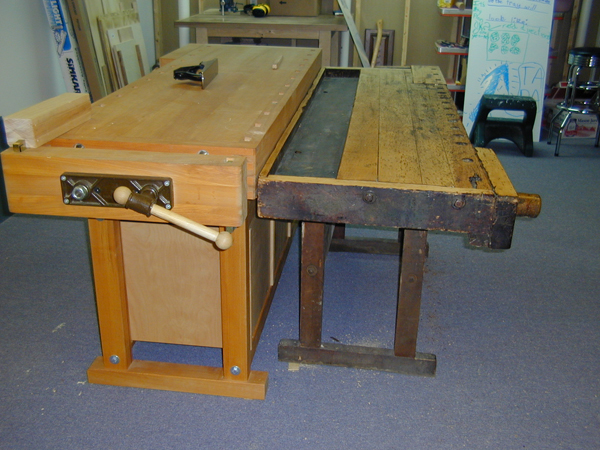Hi All
I'm getting ready to make mysef a couple of new workbenches in the Scandinavian style. I've sorted-out most of the details and even done some CAD drawings - I'll be using an end vice and a traditional U-type front vice with a single row of dogs - but I'd appreciate any feedback from users of Scandinavian/German-type benches about what works/doesn't work in their bought-in/home-made benches. I'm planning to make the tops out of beech as I'm sitting on what at times seems like the EU steamed beech mountain here, whilst the leg frame is going to be recycled pallet pine from steel sheet pallets (i.e. 4 x 3 inch sections, 20 feet long). Anyone got any for or against feelings about incorporating storage beneath the top? I'm all ears guys and gals.
Scrit
I'm getting ready to make mysef a couple of new workbenches in the Scandinavian style. I've sorted-out most of the details and even done some CAD drawings - I'll be using an end vice and a traditional U-type front vice with a single row of dogs - but I'd appreciate any feedback from users of Scandinavian/German-type benches about what works/doesn't work in their bought-in/home-made benches. I'm planning to make the tops out of beech as I'm sitting on what at times seems like the EU steamed beech mountain here, whilst the leg frame is going to be recycled pallet pine from steel sheet pallets (i.e. 4 x 3 inch sections, 20 feet long). Anyone got any for or against feelings about incorporating storage beneath the top? I'm all ears guys and gals.
Scrit



































